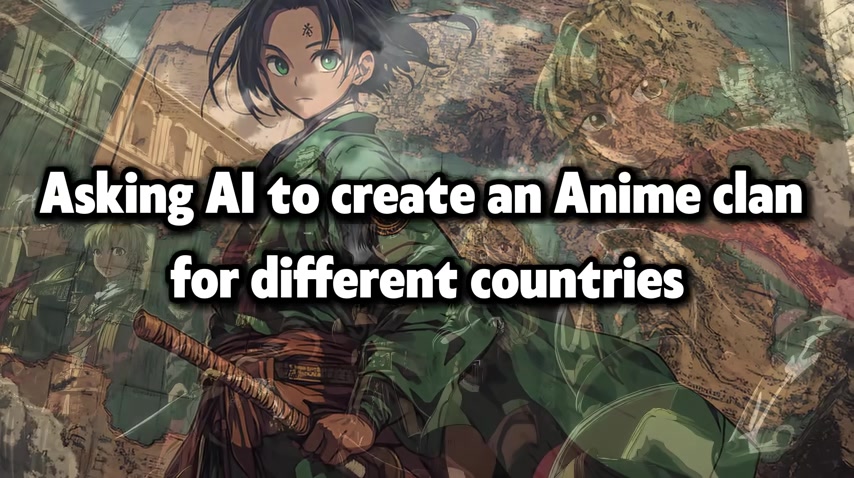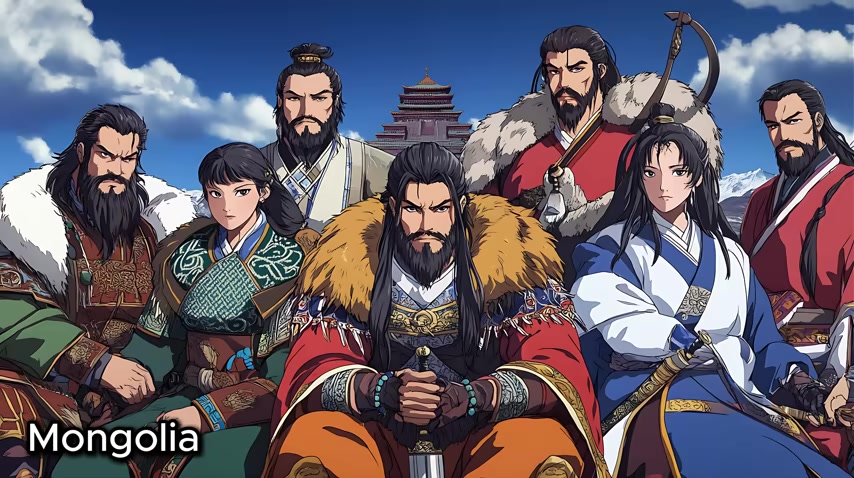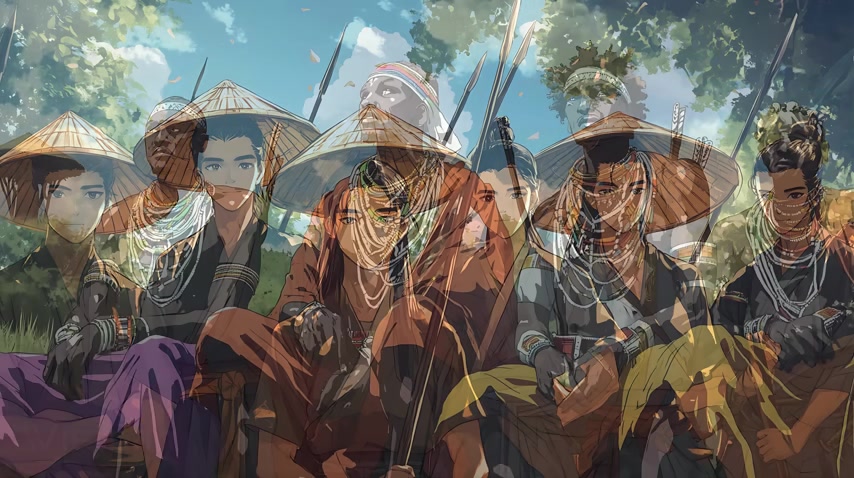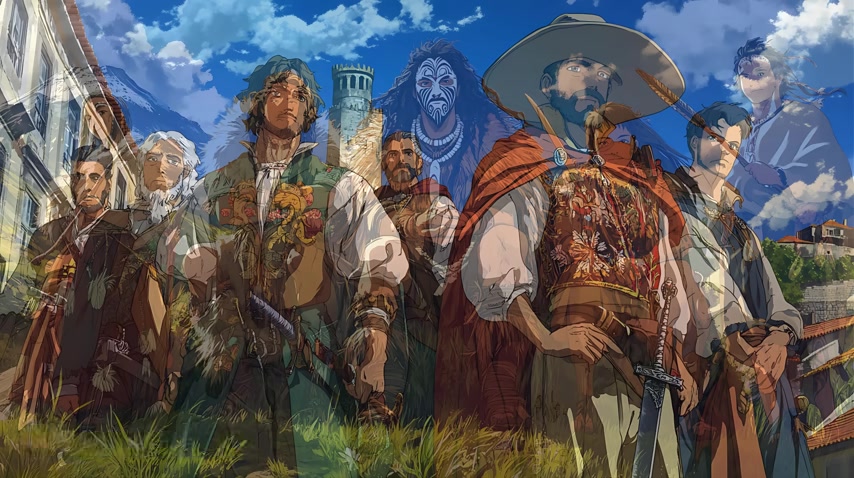
Key Points
AI can generate unique anime clans based on different countries.
Cultural elements play a significant role in shaping the visual style and characteristics of these clans.
AI algorithms leverage vast datasets of cultural and artistic information to produce creative outputs.
The use of AI offers a novel approach to character design and world-building in anime.
Exploring various cultural aesthetics through AI-generated anime clans fosters cross-cultural appreciation.
Exploring AI-Generated Anime Clans Inspired by Global Cultures
The Concept of AI-Driven Cultural Anime Clans
Anime clans have always been a staple of the genre, offering a foundation for extensive storytelling and character development.

The use of AI in generating anime clans represents a new frontier, enabling creators to develop diverse and culturally inspired groups quickly. By inputting various cultural parameters into AI algorithms, it’s possible to generate clans with distinct visual traits, historical backgrounds, and unique abilities. This method not only speeds up the creative process but also opens new avenues for exploring global cultures in anime.
Visual Styles and Cultural Inspiration
The visual style of an anime clan is crucial in defining its identity and appeal. AI algorithms can draw from a vast database of artistic styles, historical fashion, and cultural symbols to generate visually stunning anime clans.

Each clan’s aesthetic can be tailored to reflect the unique characteristics of the country it represents.
For instance, an anime clan inspired by Italy might feature designs influenced by Roman armor and Renaissance art, while a clan inspired by Mongolia could incorporate nomadic warrior traditions and intricate patterns from traditional clothing. This level of detail not only enhances the visual appeal but also provides a deeper cultural context for the characters and their stories.
Cultural Anime Clans by Region: A Detailed Look
European Anime Clans
Italy: An AI-generated Italian clan might be themed around ancient Roman legionaries or Renaissance artists. Expect to see characters clad in stylized armor or flowing garments reminiscent of classic Italian paintings. Their abilities could involve manipulating the elements of earth and fire, reflecting Italy’s volcanic activity and historical power.
Ireland: Inspired by Celtic mythology, an Irish anime clan could have members with Druidic powers and a deep connection to nature.

Their designs might incorporate green cloaks, intricate knot patterns, and symbols of ancient Irish gods. Magic and elemental control would be central to their combat abilities.
Hungary: Drawing from the country’s rich history, a Hungarian clan might feature characters with nomadic roots and skilled horsemanship. Traditional Magyar clothing, intricate embroidery, and falconry could influence their visual design. Their powers could revolve around swift attacks and strategic formations.
Poland: A Polish-inspired clan could showcase elements of medieval knighthood and noble attire. Expect to see armored figures, traditional Polish weaponry, and symbols of Polish pride. Their abilities could be rooted in strategic combat and unbreakable defense.
Sweden: Inspired by Viking heritage, a Swedish clan might embody the spirit of seafaring warriors. Their designs would incorporate Nordic runes, sturdy armor, and seafaring motifs. Powers could include controlling the seas and wielding ancient Viking magic.
Asian Anime Clans
Mongolia: A Mongolian anime clan could be inspired by nomadic warriors, featuring characters dressed in traditional deel clothing and wielding bows with exceptional skill.

Their powers might revolve around swiftness, adaptability, and archery proficiency.
Vietnam: A Vietnamese clan might emphasize agricultural roots, showing characters in Ao Dai clothing with conical hats, skilled in martial arts and wielding nature-based powers. Their design could be based on Vietnamese clothing and weapons.
China: A Chinese anime clan might be inspired by imperial dynasties or martial arts traditions, with characters dressed in Hanfu clothing and wielding swords, with power over elemental forces.
Bangladesh: A Bangladeshi clan might emphasize the country’s rich textile traditions, showcasing characters in colorful sarees and skilled in water-based powers, reflecting the region’s rivers.
Japan: A Japanese anime clan could be inspired by samurai culture, featuring characters in traditional kimonos and wielding katana swords, with spiritual and supernatural abilities.
African Anime Clans
Kenya: A Kenyan anime clan could draw inspiration from Maasai warriors, showcasing characters with distinctive beadwork and wielding spears, with powers related to animal spirits.

Their designs would focus on Kenyan colors and tribal patterns.
Congo: A Congolese clan could emphasize Music and dance, with characters adorned in colorful fabrics and skilled in rhythmic combat, reflecting the region’s vibrant cultural heritage.
Nigeria: A Nigerian anime clan might be inspired by traditional Yoruba royalty, showcasing characters adorned in elaborate robes and wielding mystical staffs, with elemental powers based on Nigerian mythology.
Ethiopia: An Ethiopian clan could emphasize the country’s ancient Christian traditions, showcasing characters with distinctive headwear and skilled in healing powers, reflecting the region’s rich religious history.
Zimbabwe: A Zimbabwean anime clan could draw inspiration from the country’s architecture, showcasing characters with tribal patterns and wielding spears, with elemental powers related to the region’s natural resources.
South American Anime Clans
Brazil: A Brazilian anime clan might be inspired by favela culture, showcasing characters with colorful streetwear and skilled in capoeira,

with powers related to samba rhythms.
Bolivia: A Bolivian anime clan could be inspired by high-altitude cultures, showcasing characters with indigenous clothing and wielding slings, with powers related to mountain spirits.
Venezuela: A Venezuelan anime clan might be inspired by Simon Bolivar, with characters in military attire and skilled in strategic combat, with powers related to leadership and courage.
Chile: A Chilean anime clan could be inspired by gaucho culture, showcasing characters with cowboy hats and wielding lassos, with powers related to horsemanship.
Argentina: An Argentinean clan might be inspired by gaucho culture, with characters in western attire and skilled in knife fighting, with powers related to tango.
Oceanic Anime Clans
New Zealand: A New Zealand anime clan might draw inspiration from Māori warriors, showcasing characters with traditional tattoos and wielding clubs, with spiritual powers related to Māori mythology.

Their designs would feature traditional Māori elements.
Fiji: A Fijian anime clan could emphasize maritime traditions, showcasing characters adorned in tribal robes and skilled in water-based powers, reflecting the island’s oceanic environment.
Samoa: A Samoan clan could be inspired by Samoan warriors, featuring characters with tribal tattoos and wielding clubs, with spiritual powers related to Polynesian mythology.
Pros and Cons of AI-Generated Anime Clans
Increased efficiency in clan creation
Integration of diverse cultural elements
Fostering creativity and innovation
Potential for unique character design
Potential for cultural misrepresentation
Risk of copyright infringement
Dependence on quality training data
Requires human oversight and refinement
FAQ
How does AI generate anime clans?
Can AI-generated anime clans be used in commercial projects?
What are the limitations of using AI to create anime clans?
Are AI-generated anime clans truly original?
What role do human artists play in AI-generated anime clan creation?
Related Questions
What are some ethical considerations when using AI to create culturally inspired anime?
How can AI be used to develop unique character abilities for anime clans?
What are the future trends in AI-generated anime content?
How does AI help foster cross-cultural appreciation through anime?
